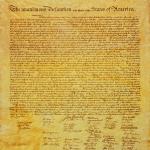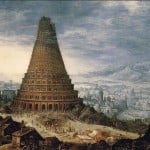 I have to admit that the recent events in Ferguson, Missouri have triggered mostly cynicism for me. In the US we have periodic paroxysms of piety triggered by events that happen every day but occasionally “go viral” in the media. Then, the outrage subsides . . . and nothing changes.
I have to admit that the recent events in Ferguson, Missouri have triggered mostly cynicism for me. In the US we have periodic paroxysms of piety triggered by events that happen every day but occasionally “go viral” in the media. Then, the outrage subsides . . . and nothing changes.
Allow me to relate an example that went viral for a few weeks.
I was born across the river from St. Louis, on the Illinois side, the industrial side of the river where African Americans and EuroAmericans have lived since the late Nineteenth Century. The fortunes of that swath of river bank have gone up and down over the years, depending upon armament manufacture, but for the most part the region has been poor and race relations tense.
The people—black and white—who moved to the area have been mostly from rural Southern backgrounds, and the culture has long reflected that reality.
If anyone is looking for a great place to film a documentary about US poverty, I would suggest East St. Louis. But then I know that every city in the country has the scenes available there. It’s just that East St. Louis is a small town.
On July 2, 1917 an event occurred extreme even by the standards of the southern third of Illinois. As the style was at the time, the event was called the East St. Louis Riot. It was, in truth, the East St. Louis Massacre. It was a pattern replicated all over the United States—an incident occurred; whites saw the incident as a perfect excuse to teach blacks a lesson; violence ensued; outrage about the violence ensued; calls went out for change; things went back to normal; nothing changed.
But that’s my cynicism speaking, isn’t it?
This appears to be what happened: after a triggering incident, whites gathered at the edge of an area called Black Valley, the neighborhood where African Americans lived. Whites turned off the water leading into the area so that fires could not be extingushed. Then, they set fire to houses and stores.
As blacks escaped from the fire, whites shot, beat, or lynched as many people as they could.
The Illinois governor ordered the National Guard to occupy the area. When they arrived the troops aided the rioters, joining in the setting of fires and using their superior firepower to kill more blacks. (I know this bit because a member of my family was there and told the story when I was a child, in the early 1960s—I heard many such stories.)
The massacre eventually stopped because the rioters got tired and went home.
No one knows how many people died, since Black Valley was left to bury its own dead. The death toll was probably around 200.
As in the case of Ferguson, marches of solidarity with the victims spread across the US. One political cartoon from the time says it best, perhaps. A black woman is pictured imploring President Wilson—famous for his insistence upon making the world safe for democracy—”Mr. President, why not make America safe for democracy?”
Good question. And a question that echoes down the years. Why is it that we don’t make America safe for democracy?
The methods of oppression used in the East St. Louis Massacre—which continued into the 1950s—do not play well on TV, so in the television era lynchings and mass murders stopped.
Notice that when similar pictures appeared from Ferguson, Washington got busy talking about at least perhaps maybe talking about the wisdom of selling military-grade hardware to local police. (This might even change, if a sufficient number of Americans remember the images long enough to continue talking about the problem.) Remember: my forebear used his government-issued rifle to kill the people he was sent to protect.
In the television era, oppression has been for the most part more isolated—a shooting here, a Rodney-King-style beating there. Sudden, overt, isolated, and constant.
And usually not displayable on TV.
The smartphone, however, may change that. The new technology brought about the Arab Spring, and it might—it could—begin to dismantle the current US system of black oppression.
Violence against this systematic oppression is not the answer. Neither is a brief paroxysm of national outrage. The violence will stop only when we the people catch the acts and put them on television and across the web.
Racists don’t like to see themselves in action on TV. (Or, rather—they don’t like to be seen by liberals on TV.)
I can’t speak for the people across the river in Missouri, but this white guy, a descendent of Confederates and white supremacists, would like to see an end to the violence and oppression.
Marcus Garvey, commenting on the East St. Louis Massacre, perhaps said it best:
“This is no time for fine words, but a time to lift one’s voice against the savagery of a people who claim to be the dispensers of democracy.”














